- Home
- /
- Healthy Meal
- /
- Products
- /
- The Top 10 Most...
- /
- The Top 10 Most...
- 1. Tobacco, E-Cigarettes, Hookah: How They Impact Our Body
- 2. Sugary Beverages: Unveiling the Sweet Danger of Harmful Product
- 3. Processed and Fast Food: Insidiousness on Our Plates
- 4. Alcohol: Unveiling the Complex Tapestry of Harm
- 5. Sugary Snacks and Desserts: The Pitfalls of Tempting Treats
- 6. Pesticide-Laden Produce: The Silent Threat on Our Plates
- 7. Highly Processed Meats: The Insecurity in Our Diets
- 8. Artificial Sweeteners: The Sweet Deception with Hidden Consequences
- 9. Non-Stick Cookware: The Fatal Slippery Slope
- 10. Single-Use Plastics: A Silent Threat to Our Health
In our bustling, modern world, convenience often takes precedence. We reach for products that promise ease, speed, and affordability, believing they will improve our lives. Yet, as we embrace these everyday conveniences, we must also confront the complex and often concealed web of harm they weave into the fabric of our existence.This article ventures into the heart of our daily lives, revealing the top 10 most harmful products that have garnered notoriety for their detrimental impact on our health, environment, and well-being. As we explore these seemingly innocuous items, we’ll uncover their hidden dangers, understand the risks they pose, and shed light on the choices we can make to mitigate their harm.
Join us on this eye-opening journey through the top 10 most harmful products, and discover the power of awareness, choice, and collective action in safeguarding our health, environment, and the generations yet to come. It’s time to unveil the hidden dangers and embrace a more conscious, sustainable way of living.
1. Tobacco, E-Cigarettes, Hookah: How They Impact Our Body
Tobacco products, including cigarettes and chewing tobacco, have long been known to be harmful to health. Smoking is a principal cause of preventable deaths worldwide, and it is responsible for a wide range of health issues, such as lung cancer, heart disease, and respiratory disorders. Chewing tobacco is also linked to oral cancers and other health issues. Quitting tobacco is one of the best things you can do for your health.
Tobacco products, particularly cigarettes, have a long-standing reputation as one of the most harmful substances humans willingly introduce into their bodies. Understanding how these products affect our physiology is crucial in appreciating the gravity of their harm. Moreover, exploring the relatively newer alternatives like vaping and hookah can shed light on whether they are any less detrimental.
1.1. Customary Cigarettes: A Detrimental Concoction
When a person inhales the smoke from a cigarette, they introduce a potent mix of toxic chemicals into their system. These chemicals include nicotine, carbon monoxide, tar, and an array of carcinogens. Here’s how these components wreak havoc on the body:
A. Nicotine: Nicotine is the highly addictive compound in tobacco. It induces the disengagement nof dopamine, a neurotransmitter connected with enjoyment and reward, creating a powerful craving. Over time, the body becomes dependent on nicotine, making quitting smoking a formidable challenge.
B. Carbon Monoxide: Inhaling the carbon monoxide in cigarette smoke interferes with the body’s ability to carry oxygen to vital organs. This can lead to a host of cardiovascular problems, including heart disease and stroke.
C. Tar: The tar in cigarette smoke consists of thousands of chemical compounds, many of which are carcinogenic. It is primarily responsible for the lung damage seen in smokers, leading to conditions like chronic obstructive pulmonary disease (COPD) and lung cancer.
D. Carcinogens: Cigarette smoke contains a litany of carcinogens that increase the risk of divers cancers, not only in the lungs but also in the mouth, throat, esophagus, and more.
1.2. The Rise of Vaping: Are E-cigarettes a Safer Alternative?
E-cigarettes, or vapes, were initially marketed as a less harmful alternative to traditional cigarettes. They work by heating a liquid (e-juice) containing nicotine and other chemicals, producing an aerosol that users inhale. However, emerging evidence suggests that vaping is far from risk-free:
A. Unfamiliar Durable Effects: Vaping is relatively new, and its durable health effects are not fully comprehensed. Early studies indicate potential lung injuries, cardiovascular problems, and addiction concerns.
B. Youth Epidemic: Vaping has become a concerning trend among young people, leading to nicotine addiction and potential harm to brain development.
C. Unregulated Products: The lack of regulation has allowed for a wide variety of e-cigarette products with varying levels of quality and safety. Some may contain deleterious substances not listed on the packaging.
1.3. Hookah Smoking: A Misconceived Social Activity
Hookah is another alternative to traditional cigarettes often perceived as less harmful. However, the communal aspect of hookah smoking can mask its dangers:
A. Toxic Smoke: Contrary to popular belief, hookah smoke contains many of the same harmful chemicals as cigarette smoke, including nicotine and carcinogens.
B. Carbon Monoxide Exposure: Users inhale significant amounts of carbon monoxide, leading to the same risks of cardiovascular problems as traditional smoking.
C. Infectious Disease Risk: Sharing a hookah pipe can facilitate the spread of infectious diseases, such as tuberculosis and herpes.
In conclusion, while alternatives like vaping and hookah may seem like safer options compared to traditional cigarettes, they are not without their own set of health risks. The harmful effects of tobacco products on the human body are extensive and well-documented, making it imperative for individuals to make informed choices regarding their consumption. Ultimately, the best approach to safeguard one’s health is to avoid all forms of tobacco and nicotine products altogether.
2. Sugary Beverages: Unveiling the Sweet Danger of Harmful Product
Sugary beverages, such as soda, energy drinks, and fruit juices with added sugars, are a major contributor to the obesity epidemic and related health problems. These drinks are loaded with empty calories and can provoke weight gain, type 2 diabetes, and tooth decay. Choosing water, herbal teas, or naturally sweetened alternatives is a healthier choice.
While sugary beverages may seem innocuous compared to tobacco products, they have rightfully earned their spot as the second most harmful item on our list. These seemingly innocent drinks pack a sweet but insidious punch to our health, contributing significantly to the global rise in obesity, diabetes, and cardiovascular diseases.
2.1. Understanding Sugary Beverages: What They Are Exactly
Sugary beverages, often referred to as sugar-sweetened beverages (SSBs), encompass a wide range of drinks that share a common and concerning characteristic: an excessive amount of added sugars. These sugars can come in various forms, including sucrose (table sugar) and high-fructose corn syrup. Here’s a closer look at some of the most common sugary beverages:
A. Soda
Carbonated soft drinks, commonly known as soda or pop, are perhaps the most notorious culprits. They come in a rainbow of flavors and are typically loaded with sugars, additives, and caffeine.
B. Fruit Drinks
Fruit drinks or fruit-flavored beverages often masquerade as healthy options due to their fruity branding. However, many of these drinks contain minimal actual fruit juice and are primarily sugar water.
C. Energy Drinks
Marketed as a source of quick energy and alertness, energy drinks are infamous for their high caffeine and sugar content, making them a dangerous cocktail for health.
D. Sports Drinks
While designed to replenish electrolytes during intense physical activity, sports drinks also contain added sugars, which may not be necessary for the average person and can facilitate weight gain.
E. Sweetened Iced Tea
Pre-packaged iced teas can be deceptively high in added sugars, masking the tea’s natural flavor.
F. Flavored Water
Some flavored water products, especially those not labeled as “unsweetened,” may contain added sugars to enhance taste.
G. Fruit Juices with Added Sugars
Even 100% fruit juices can be detrimental when sugars are added during processing. These added sugars often make the beverage sweeter than necessary.
It’s important to note that the sugar content in these beverages can vary widely between brands and even within product lines. Reading nutrition labels and ingredient lists is vital for making aware choices about your beverage consumption. Recognizing that these drinks are often hidden sources of excessive sugars can empower individuals to take control of their health by reducing their intake and opting for healthier alternatives.
2.2. The Sugar Overload: A Sweet Recipe for Disaster
Sugary beverages, which include soft drinks, energy drinks, and fruit juices with added sugars, are loaded with excessive amounts of sugar, often in the form of high-fructose corn syrup. Here’s how they impact our health:
More about sugar read in this article: Sugar: Its Impact on Health
A. Weight Gain and Obesity: The excessive sugar content in these drinks leads to an overconsumption of empty calories. These added calories promote to weight gain and obesity, a global epidemic with far-reaching health consequences.
B. Insulin Resistance and Diabetes: Frequent consumption of sugary beverages can provoke insulin resistance, a condition where your body’s cells get less responsive to insulin, increasing the risk of type 2 diabetes.
C. Cardiovascular Troubles: High sugar consumption has been connected to an grown risk of heart disease. It can raise blood pressure, lead to unhealthy cholesterol levels, and contribute to arterial inflammation.
D. Tooth Decay: The high sugar maintenance in these drinks provides a feast for harmful bacteria in your mouth, leading to tooth decay and cavities.
2.3. Misleading Marketing and Hidden Health Risks
One reason sugary beverages are particularly harmful is the deceptive marketing and packaging they often employ. Many products are marketed as “natural” or “healthy” due to the presence of fruit juices or vitamin additives. However, these additives do little to offset the harm caused by the excessive sugar content.
Additionally, the convenient and ubiquitous availability of sugary drinks, often in supersized portions, makes it easy for individuals to eat or drink more sugar than they perceive .
A Word About Fruit Juices
Even fruit juices, which may seem like a healthier option, can be heavy with additional sugars. When juice is extracted from fruits, it loses much of its fiber content, leaving behind a concentrated source of sugar. Drinking fruit juices in moderation and opting for whole fruits instead is a better choice for overall health.
Taking Control of Your Beverage Choices
Understanding the harmfulness of sugary beverages is the first step towards making healthier choices. Consider these alternatives:
- Water: The simplest and healthiest option. Staying hydrated with water helps control calorie intake and supports overall well-being.
- Herbal Teas: These are naturally caffeine-free and come in a variety of flavors. Many herbal teas can be enjoyed hot or cold.
- Infused Water: Add natural flavors to your water by digesting it with fruits, herbs, or cucumber slices for a refreshing twist.
More about different types of water and its known characteristics read here: Water and the Human Body: The Vital Connection:
- Seltzer Water: Sparkling water with a hint of natural flavor can be a satisfying alternative to sugary sodas.
In conclusion, sugary beverages hold the second spot on our list of harmful products because they contribute significantly to the global burden of preventable diseases. By recognizing the health risks associated with these drinks and making informed choices, individuals can take control of their well-being and reduce their risk of obesity, diabetes, and other related health issues. Prioritizing healthier beverage options is a small change that can have a significant impact on overall health and longevity.
3. Processed and Fast Food: Insidiousness on Our Plates
Processed and fast foods are often high in unhealthy trans fats, sodium, and artificial additives. Constant intake of these foods can drive to obesity, heart disease, and other chronic health conditions. It’s essential to prioritize whole, unprocessed foods and home-cooked meals whenever possible.
3.1. What pitfalls of this harmful products?
Processed and fast foods have become a ubiquitous part of modern life, offering convenience and instant gratification. At the same time, beneath their appealing flavors and quick service lies a host of health risks that have earned them a notorious reputation in the realm of harmful products. Let’s dive into why these foods are deserving of their place on the list.
A. Poor Nutritional Profile
Processed and fast foods are customary high in calories, unhealthy fats, and refined sugars while lacking crucial nutrients like fiber, vitamins, and minerals. This skewed nutritional profile can lead to overconsumption of empty calories, contributing to obesity and malnutrition simultaneously.
B. Excessive Sodium
These foods are notorious for their sky-high sodium content, which is often used to enhance flavor and preserve the products. Overconsumption of sodium can lead to high blood pressure, a major risk factor for heart disease and stroke.
C. Trans Fats and Unhealthy Fats
Many processed and fast foods keep trans fats, which are artificially created fats known to enlarge the risk of heart disease and other chronic health conditions. Even when trans fats are not present, these foods frequently have unhealthy saturated fats that can have a detrimental impact on heart health.
More about transfats read in the article: Trans Fats: What matters Frying
D. Additives and Preservatives
Processed foods are loaded with artificial dopants, preservatives, and flavor enhancers to extend shelf life and enhance taste. Some of these additives may have unfamoliar long-term health effects.
E. High Sugar Content
Sugar is frequently used to improve the taste of processed foods, even those that aren’t inherently sweet. Undue sugar intake is linked to obesity, diabetes, and dental problems.
F. Portion Distortion
Fast food chains are notorious for offering oversized portions, encouraging overeating and contributing to weight gain.
G. Lack of Dietary Fiber
Processed and fast foods are custimary devoid of dietary fiber, which is essential for digestive health and can help control hunger. The absence of fiber can lead to digestive issues and overeating.
H. Increased Risk of Chronic Diseases
Regular consumption of processed and fast foods has been bound to an enlarged risk of chronic diseases such as obesity, type 2 diabetes, heart disease, and certain cancers.
I. Negatory Power on Mental Health
Current research proffer a link between diets high in processed and fast foods and an increased risk of depression and other mental health issues.
While the allure of convenience and affordability is undeniable, it’s essential to recognize the long-term costs of consuming processed and fast foods. Prioritizing whole, unprocessed foods and home-cooked meals can significantly reduce the health risks associated with these products. Understanding the harmfulness of processed and fast foods empowers individuals to make aware dietary choices that promote better health and well-being.
4. Alcohol: Unveiling the Complex Tapestry of Harm
While moderate alcohol consumption may have some health benefits, excessive drinking is related to a range of health issues, such as liver disease, addiction, and an increased risk of accidents and injuries. It’s important to drink alcohol in moderation and be mindful of its effects on your health.
Alcohol, often perceived as a social lubricant and a means of relaxation, holds a paradoxical position in society. While moderate consumption may offer certain health benefits, it’s crucial to understand the intricate web of harm that excessive or chronic alcohol use can weave in our lives. Let’s delve into the multifaceted reasons why alcohol has secured a place on the list of the most harmful products.
4.1. And here is why
A. Dependency
Perhaps the most immediate concern with alcohol is its potential for addiction. Ethanol, the active component in alcoholic beverages, can contribute to physical and psychological bondage, making it challenging for individuals to control their consumption.
B. Health Impacts
While moderate alcohol consumption has been linked to potential heart benefits, excessive drinking can lead to a myriad of health problems. These include liver disease, pancreatitis, determined cancers (like liver, mouth, throat, and breast cancer), and an enlarged risk of cardiovascular issues.
C. Mental Health Effects
Alcohol abuse is closely tied to mental health problems, such as depression and anxiety. It can exacerbate existing conditions and hinder recovery.
D. Impaired Judgment and Accidents
Alcohol impairs cognitive function and coordination, increasing the risk of accidents, injuries, and impaired decision-making. Drunk driving, for example, is a significant cause of traffic fatalities worldwide.
E. Social and Economic Impact
Alcohol misuse not only affects individuals but also has far-reaching societal consequences. It can strain relationships, disrupt families, and lead to job loss and financial instability.
F. Violent Behavior
Alcohol is often associated with aggressive and violent behavior. Intoxication can lower inhibitions and lead to dangerous situations and conflicts.
G. Long-term Cognitive Effects
Chronic alcohol abuse can result in cognitive impairment and a higher risk of conditions such as dementia.
H. Legal Consequences
Alcohol-related offenses, such as DUIs (driving under the influence) and public intoxication, can lead to legal consequences, including fines, probation, and even imprisonment.
I. Impact on Fetal Development
Pregnant women who consume alcohol risk causing serious harm to the developing fetus. Fetal alcohol syndrome can result in birth defects and lifelong developmental issues.
4.2. Responsible Consumption and Informed Choices
While it’s important to acknowledge the potential harm associated with alcohol, it’s equally crucial to recognize that moderate, responsible consumption can coexist with a healthy lifestyle. Understanding one’s limits, seeking help for alcohol dependency, and being mindful of the social and personal implications of alcohol use are essential steps in mitigating its harm.
More about alcohol, its “safe doze” and much more read here: Alcohol and Healthy Life Style: The Impact on the Body
In conclusion, alcohol’s complex impact on individuals and society at large cannot be understated. It holds both the potential for pleasure and the risk of harm, making informed, responsible choices regarding alcohol consumption critical for overall health and well-being. Recognizing the multifaceted nature of alcohol’s harm empowers individuals to navigate its effects on their lives more consciously and responsibly.
5. Sugary Snacks and Desserts: The Pitfalls of Tempting Treats
Sugary snacks and desserts are thick high in additional sugars and can contribute to weight gain, insulin resistance, and dental issues. Limiting your intake of these treats and opting for healthier disjunctives like fruits or nuts can help protect your health.
In the realm of culinary indulgence, sugary snacks and desserts often take center stage. The allure of a sweet treat after a meal or as a pick-me-up during the day is undeniable. However, these seemingly harmless pleasures can have a profound impact on our health. Let’s explore why sugary snacks and desserts have earned their place on the list of the most harmful products.
5.1. Decide yourself if it is really scary harmful product
A. The Sugar Avalanche
The defining feature of sugary snacks and desserts is their high sugar content. They are often loaded with added sugars, delivering an intense burst of sweetness that can lead to several health issues.
B. Weight Gain and Obesity
Excessive sugar intake is a leading contributor to weight gain and obesity. These treats are calorie-dense and, when consumed in excess, can contribute to an unhealthy increase in body weight.
C. Blood Sugar Rollercoaster
Sugary snacks and desserts cause rapid spikes in blood sugar levels, followed by crashes. This rollercoaster effect can lead to feelings of fatigue, irritability, and cravings for more sugar.
D. Insulin Resistance
Frequent consumption of sugary treats can lead to insulin resistance, a condition where your body’s cells become less responsive to insulin. This is a precursor to type 2 diabetes.
E. Tooth Decay
The high sugar content and stickiness of many desserts can wreak havoc on dental health, leading to cavities and tooth decay.
F. Empty Calories
Sugary snacks and desserts offer very little in terms of vital nutrients like vitamins, minerals, and fiber. They are essentially “empty” calories that ensure little nutritional value.
G. Cardiovascular Risk
Diets high in additional sugars are connected with an enlarged risk of heart disease and other cardiovascular problems.
H. Addiction-Like Properties
Sugar has been shown to have addictive properties, leading to cravings and overconsumption, which can be challenging to control.
I. Impact on Mood and Mental Health
The sugar rush and subsequent crash can affect mood and mental well-being, leading to mood swings and exacerbating symptoms of conditions like anxiety and depression.
J. Hidden Sugars
Sugars are often hidden in various forms, such as high-fructose corn syrup, cane sugar, and maltose, making it challenging to identify and avoid them in processed foods.
5.2. Making Sweet Choices
- Portion Control: Enjoy sweets in small portions to satisfy your craving without overindulging.
- Natural Sweeteners: Opt for treats sweetened with natural sweeteners like honey or maple syrup, which may have a lower glycemic index.
- Homemade Goodness: Preparing desserts at home allows you to control the ingredients and reduce sugar content.
- Fruit-Based Options: Choose desserts that incorporate fresh or dried fruits, as these provide natural sweetness along with fiber and nutrients.
- Read Labels: When buying packaged snacks, read labels to identify hidden sugars and make consious choices.
While the occasional indulgence in sugary snacks and desserts can be part of a balanced diet, it’s crucial to exercise moderation and choose wisely. Here are some tips for making sweet choices that are less harmful:
Sugary snacks and desserts are tantalizing treats that can have hidden hazards for our health. Being mindful of their impact, practicing moderation, and making informed choices can help us enjoy these delights while prioritizing our overall well-being. Understanding the potential harm of these indulgences empowers individuals to strike a balance between satisfying their sweet tooth and maintaining a healthy lifestyle.
6. Pesticide-Laden Produce: The Silent Threat on Our Plates
Conventionally grown fruits and vegetables often contain residues of pesticides, which can pose health risks when consumed over time. Choosing organic produce or washing fruits and vegetables thoroughly can reduce your exposure to these harmful chemicals.
Produce, brimming with vibrant colors and nutrients, is an essential component of a healthy diet. However, the presence of pesticides in conventionally grown fruits and vegetables has given rise to significant concerns. Let’s explore why pesticide-laden produce merits its place among the top 10 most harmful products, even when it appears to be a wholesome choice.
4.1. Why are this products in the list of the 10 most harmful products?
A. The Pervasive Use of Pesticides
Pesticides are chemical compounds used to protect crops from pests, diseases, and weeds. While they serve a crucial purpose in modern agriculture, their widespread use has led to their presence in the environment, including on the foods we eat.
B. Health Risks
Pesticides are designed to kill or harm living organisms, and their residues can persist on produce. Long-term exposure to pesticide residues has been bound ito divers health risks, such as an amplified risk of certain cancers, neurological disorders, and developmental issues in children.
C. Accumulation in the Body
Pesticides can accumulate in the human body over time, particularly in fatty tissues. This accumulation may lead to chronic health problems.
How endocrine disruptors including pesticides affect our body get known here: Endocrine Disruptors: the Silent Threat
D. Environmental Pressure
Pesticides not only affect human health but also have a significant impact on the environment. They can contaminate soil, waterways, and harm non-target species, disrupting ecosystems and biodiversity.
E. Residue Levels
While regulatory bodies establish acceptable pesticide residue levels on produce, these levels can vary, and the cumulative effects of multiple pesticides are not always considered. Some individuals may be more sensitive to pesticide exposure than others.
F. Vulnerable Populations
Children, pregnant women, and individuals with compromised immune systems are especially vulnerable to the health risks associated with pesticide exposure.
G. Reduced Nutrient Content
Some studies propose that pesticide use may lead to a reduction in the nutrient content of fruits and vegetables. This raises concerns about the potential impact on the nutritional quality of our food.
H. Alternatives and Organic Farming
Organic farming practices, which avoid synthetic pesticides, offer a safer and more sustainable alternative. Choosing organic produce can reduce exposure to pesticide residues.
I. Washing and Peeling
Thoroughly washing and peeling fruits and vegetables can help reduce pesticide residues, although it may not eliminate them entirely, as some pesticides can penetrate the skin.
J. Advocating for Change
Consumer demand for pesticide-free produce and sustainable farming practices has led to positive changes in the agricultural industry. Supporting such initiatives can contribute to a safer food supply.
6.2. Making Informed Choices
While the convenience and availability of conventionally grown produce are undeniable, it’s essential to weigh the potential risks associated with pesticide residues against the benefits of a diet enhanced in fruits and vegetables. Making informed choices, such as opting for organic produce or washing and peeling conventionally grown items, can help reduce pesticide exposure.
In conclusion, pesticide-laden produce underscores the intricate balance between feeding a growing global population and safeguarding our health and the environment. By understanding the potential harm of pesticide residues, individuals can make conscious decisions about their food choices, advocate for sustainable farming practices, and prioritize their well-being in a world where the lines between convenience and safety are often blurred.
7. Highly Processed Meats: The Insecurity in Our Diets
Highly processed meats, such as hot dogs, sausages, and deli meats, are often loaded with sodium, preservatives, and unhealthy fats. Regular consumption of these meats has been bound to an enlarged risk of cancer, heart disease, and other health problems. Opt for lean, unprocessed meats or plant-based alternatives.
Highly processed meats, often celebrated for their convenience and bold flavors, have gained notoriety in recent years due to their adverse effects on health. These processed meat products, which include items like hot dogs, sausages, and deli meats, may seem harmless on the surface, but a closer look reveals a concerning pattern of harm. Here’s why highly processed meats have earned their spot on the list of the top 10 most harmful products.
7.1. Why is this so harmful product?
A. Excessive Sodium Content
Processed meats are notorious for their high sodium content, primarily used as a preservative and flavor enhancer. Excessive sodium intake can lead to high blood pressure, a significant risk factor for heart disease and stroke.
B. Unhealthy Fats
These meats often contain unhealthy saturated fats, which can contribute to elevated cholesterol levels and increase the risk of heart disease.
C. Nitrate and Nitrite Preservatives
Processed meats are commonly preserved with nitrate and nitrite compounds, which can form nitrosamines when exposed to high temperatures, such as during cooking. Nitrosamines are known carcinogens, linking processed meats to an amplified risk of cancer, notably colorectal cancer.
D. Additives and Fillers
Many processed meats contain additives, fillers, and artificial flavors that can have unfamiliar prolonged health results. These additives may include monosodium glutamate (MSG) and other chemical compounds.
E. Reduced Nutritional Value
Highly processed meats frequently lack essential nutrients found in whole, unprocessed meats, in particular vitamins, minerals, and dietary fiber. This can lead to a diet that lacks overall nutritional balance.
F. Increased Risk of Chronic Diseases
Regular consumption of processed meats has been linked to an increased risk of various chronic diseases, including heart disease, type 2 diabetes, and certain types of cancer.
G. Potential Contaminants
The processing and packaging of these meats can expose them to contaminants, including harmful bacteria like Listeria and E. coli, which can lead to foodborne illnesses.
I. High Caloric Density
Processed meats are oftetimes n calorie-dense, making it easy to consume excess calories, contributing to weight growth and obesity.
7.2. Making Healthier Choices against Harmful Products
While it may be tempting to indulge in processed meats for their convenience and taste, there are healthier alternatives to consider:
- Lean, Unprocessed Meats: Opt for lean cuts of unprocessed meats like poultry, fish, and lean beef or pork for a more nutritious protein source.
- Plant-Based Options: Investigate plant-based protein options like tofu, tempeh, legumes, and nuts, which can provide protein without the health risks associated with processed meats.
- Moderation: If you choose to consume processed meats, do so in moderation and consider them an occasional treat rather than a dietary staple.
In conclusion, highly processed meats may offer convenience and flavor, but their potential harm to health and the environment should not be underestimated. Making informed choices and prioritizing alternatives that support both personal well-being and sustainability is essential in a world where the allure of processed foods often masks their hidden hazards.
8. Artificial Sweeteners: The Sweet Deception with Hidden Consequences
Artificial sweeteners, often used as sugar substitutes in diet products, have been connected with divers health concerns, such as disruptions in metabolism and gut health. It’s best to limit your intake of artificial sweeteners and choose natural sweeteners like stevia or honey in moderation.
Artificial sweeteners have gained popularity as sugar substitutes, offering the promise of satisfying our sweet cravings without the caloric load of sugar. At the same time, beneath their sugar-free allure lies a complex and contentious landscape of potential harm. Here’s why artificial sweeteners have secured their place on the list of the top 10 most harmful products.
8.1. Unbreakable evidence of concerning to harmful products
A. Metabolic Confusion
Artificial sweeteners, such as aspartame, saccharin, and sucralose, are intensely sweet, often hundreds or thousands of times sweeter than sugar. This intense sweetness can confuse the body’s natural regulatory systems, leading to disrupted metabolism and appetite regulation.
B. Disruption of Gut Microbiome
Current research shows that artificial sweeteners may difer the composition and function of the gut microbiome. This disruption can have far-reaching effects on digestion, immunity, and overall health.
C. Paradoxical Weight Gain
Despite their low or zero-calorie content, artificial sweeteners have been associated with weight gain and increased cravings for sweet and calorie-dense foods. This counterintuitive effect challenges the perception that they aid weight loss.
D. Insulin Resistance
Some studies offer that artificial sweeteners may contribute to insulin resistance, a precursor to type 2 diabetes.
E. Increased Sweet Cravings
Regular consumption of artificial sweeteners can provoke heightened cravings for sweet tastes, potentially making it more challenging to reduce overall sugar intake.
F. Potential Negative Effect on Mental Health
Research has hinted at a possible link between artificial sweeteners and mood disorders, including depression and anxiety.
H. Lack of Nutritional Value
Artificial sweeteners provide sweetness without any nutritional value. This can encourage a diet devoid of essential nutrients from natural sources.
I. Health Concerns in Vulnerable Population
Some individuals may be more sensitive to artificial sweeteners than others. Children, pregnant women, and individuals with certain medical conditions may be at greater risk of adverse effects.
J. Controversial Studies
The safety of artificial sweeteners remains a subject of debate, with some studies suggesting potential harm and others asserting their safety within acceptable consumption limits.
8.2. Seeking Balance and Alternatives to Harmful products
While artificial sweeteners may offer a lower-calorie option for those seeking to reduce sugar intake, it’s essential to use them judiciously and remain vigilant about their potential consequences. Here are some tips for managing artificial sweetener consumption:
- Moderation: Limit your intake of products containing artificial sweeteners and opt for natural sweeteners like stevia, monk fruit, or honey in moderation.
- Read Labels: Pay attention to ingredient labels and identify foods and beverages that contain artificial sweeteners.
- Whole Foods: Focus on a diet rich in whole, unprocessed foods, which naturally provide sweetness from sources like fruits and vegetables.
- Consult a Healthcare Provider: If you have concerns about artificial sweetener consumption, consult a healthcare provider or registered dietitian for personalized guidance.
In conclusion, artificial sweeteners may appear as a sweet escape from the perils of sugar, but their impact on health and well-being is multifaceted and complex. A balanced approach that includes informed choices, moderation, and an emphasis on whole, nutrient-rich foods can help navigate the sweet deception of artificial sweeteners in a way that supports overall health and longevity.
9. Non-Stick Cookware: The Fatal Slippery Slope
Non-stick cookware is coated with a chemical called perfluorooctanoic acid (PFOA), which has been connected to health problems, such as cancer and sophisticated issues. Consider using alternatives like stainless steel or cast iron cookware to reduce your exposure to PFOA.
Non-stick cookware has become a staple in kitchens around the world, prized for its convenience and ability to prevent food from sticking to the pan. However, beneath the glossy surface lies a complex web of potential harm that has earned non-stick cookware a place among the top 10 most harmful products. Let’s explore why these seemingly convenient pots and pans have raised concerns.
What is danger here?
A. The Teflon Connection
Non-stick cookware is often coated with a substance called polytetrafluoroethylene (PTFE), commonly known as Teflon. The production and use of PTFE have raised environmental and health concerns, as its manufacturing process releases perfluorooctanoic acid (PFOA), a potentially harmful chemical.
B. PFOA Exposure
PFOA has been linked with divers health problems, such as an enlarged risk of cancer, thyroid disorders, and reproductive issues. While PFOA has been phased out of production, older non-stick cookware may still contain this chemical.
C. Release of Toxic Fumes
When non-stick cookware is heated to high temperatures (above 500°F or 260°C), it can release toxic fumes, including perfluorinated compounds. These fumes can lead to a condition noted as polymer fume fever, which causes flu-like symptoms in humans.
D. Scratched Surfaces
Over time, the non-stick coating on cookware can become scratched or damaged. This can lead to the release of small particles and potentially toxic substances into the food being prepared.
E. Uncertainty About Long-Term Effects
Despite efforts to address the safety of non-stick coatings, the long-term health effects of regular exposure to the substances used in non-stick cookware remain a subject of ongoing research and debate.
F. Alternatives and Safer Options
While non-stick cookware offers convenience, there are safer alternatives to consider, such as stainless steel, cast iron, ceramic, or glass cookware. These options may require a bit more care and maintenance but do not pose the same potential health risks.
G. Proper Use and Care
If you choose to use non-stick cookware, it’s crucial to follow manufacturer instructions, avoid overheating, and use non-metal utensils to prevent scratching the surface.
H. Replacement
If you own older non-stick cookware that may contain PFOA or if the non-stick coating is scratched or damaged, consider replacing it with safer alternatives.
I. Advocating for Safer Cookware
Consumer demand for safer cookware has led to the development of newer non-stick coatings that claim to be free of harmful chemicals. Researching and supporting these innovations can contribute to safer options in the marketplace.
Non-stick cookware, while convenient, harbors potential dangers that should not be overlooked. Understanding the risks associated with these kitchen staples empowers individuals to make aware choices about their cookware and cooking practices, ultimately prioritizing their health and the well-being of the environment.
10. Single-Use Plastics: A Silent Threat to Our Health
Single-use plastics, such as plastic bags, bottles, and utensils, are not only harmful to the environment but can also pose health risks. Some plastics may leach detrimental chemicals into food and beverages, especially when exposed to heat. Choosing reusable and eco-friendly alternatives is a better choice for both your health and the planet.
Single-use plastics, ubiquitous in our daily lives, have a hidden danger that directly impacts human health: the potential leaching of harmful toxins into the food and beverages they come into contact with. While these plastics are designed for convenience, their potential to introduce toxins into our bodies adds another layer of concern to their harmfulness.
10.1. What does it make be in the list of the 10 most harmful products?
A. Bisphenol A (BPA)
BPA is a well-known chemical used in the production of certain plastics, including polycarbonate bottles and epoxy resins used to line food and beverage cans. Research has linked BPA exposure to hormonal disruptions, reproductive issues, and an increased risk of certain cancers.
B. Phthalates
These chemicals are often added to plastics to increase flexibility and durability. Phthalates can leach from plastic packaging into food and drinks. Some phthalates are suspected endocrine disruptors, potentially affecting hormone function and development.
C. Polyvinyl Chloride (PVC)
PVC is used in some plastic wrap and food containers. It can release chlorine gas when heated, which poses health risks when ingested or inhaled.
More about endocrine disruptors read here: Endocrine Disruptors: the Silent Threat
D. Styrene
Styrene is found in certain types of disposable cups and food containers. Prolonged exposure to styrene vapors can lead to respiratory issues and irritation.
E. Microplastics
As single-use plastics break down into smaller particles, they can become sources of microplastic contamination in the food and beverages they contact. The prolonged health effects of ingesting microplastics are still being studied.
F. Additives and Dyes
Plastics used for food packaging may contain additives and dyes, some of which may have unknown health effects when they migrate into food or beverages.
10.2. Minimizing Toxin Exposure
Given the potential risks associated with toxin leaching from single-use plastics, it’s essential to take steps to minimize exposure:
- Choose Alternatives: Whenever possible, opt for alternatives to single-use plastics. For example, use glass, stainless steel, or food-grade silicone containers for food storage and transportation.
- Check Recycling Symbols: Familiarize yourself with recycling symbols on plastic products. Avoid plastics labeled with recycling codes associated with known harmful chemicals, such as BPA.
- Avoid Microwaving Plastic: Refrain from microwaving food in plastic containers, as heat can increase the likelihood of toxins leaching into your meal. Use microwave-safe glass or ceramic containers instead.
- Stay Informed: Keep up with the latest research and news about plastic toxins, as our understanding of these chemicals and their effects continues to evolve.
- Support Regulation: Advocate for stricter regulations on the use of harmful chemicals in plastic production and for transparency in labeling.
- Buy Products in Glass or Metal: When possible, choose beverages and foods packaged in glass or metal containers, as these are less likely to leach detrimental chemicals.
The convenience of single-use plastics comes with the potential health risk of toxin leaching. By being mindful of our choices, opting for safer alternatives, and advocating for responsible plastic use and regulation, individuals can reduce their exposure to these hidden dangers and protect their health while contributing to a more sustainable future.
In a world filled with countless products vying for our attention, it’s crucial to be discerning about what we consume and use. The top 10 most harmful products mentioned in this article should serve as a reminder of the potential risks associated with certain choices we make in our daily lives. Prioritizing health and well-being by avoiding these harmful products can lead to a happier and healthier life for ourselves and future generations.
Navigating a World of Choices
As we draw the curtain on our exploration of the top 10 most harmful products, we find ourselves at a crossroads—a juncture where awareness meets action, and choice becomes a potent force for change. In our fast-paced world, where convenience often reigns supreme, it’s crucial to acknowledge the intricate tapestry of harm woven by some of our most everyday items.
From the alluring temptations of sugary beverages and snacks to the subtle toxins in non-stick cookware, from the deceptive allure of processed foods to the hidden dangers of single-use plastics, and from the silent perils of pesticide-laden produce to the complex web of harm presented by artificial sweeteners, alcohol, tobacco, and highly processed meats, we’ve delved into a world where convenience and harm often intersect.
Light future
However, our journey through these hazards has not been one of despair but of enlightenment. It’s a journey that empowers us to make more informed choices—choices that prioritize our health, the environment, and the well-being of future generations. We’ve uncovered the hidden dangers beneath the surface of these products, and armed with knowledge, we can now chart a different course.
We have the power to reduce our consumption of harmful products, choose healthier alternatives, advocate for better regulations, and support sustainable practices. It’s not about forsaking convenience altogether but about finding a balance that aligns with our values and the greater good. It’s about recognizing that our choices ripple through society and the environment, creating a collective impact.
Consciensious choice is the best option
In the end, this exploration is a call to action—a call to consider the hidden costs of our daily conveniences and to make choices that foster well-being for ourselves and the planet. It’s an invitation to embrace a more conscious, sustainable way of living, where our choices reflect not only our needs and desires but also our commitment to a healthier, more harmonious world.
The top 10 most harmful products have been unveiled, their hidden dangers exposed. Now, it’s up to us to navigate this world of choices with wisdom, responsibility, and a sense of purpose. Together, we can rewrite the narrative of harm and build a future where convenience and well-being coexist, where informed choices become a catalyst for positive change.
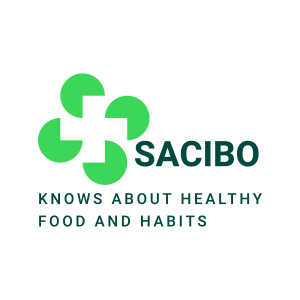














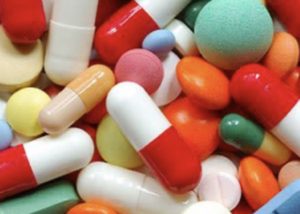












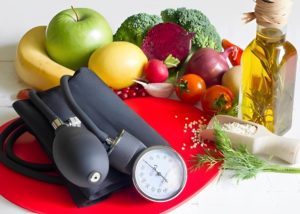











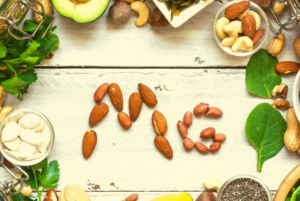










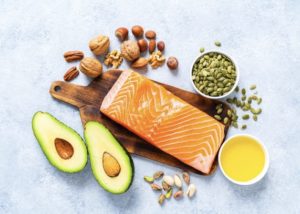










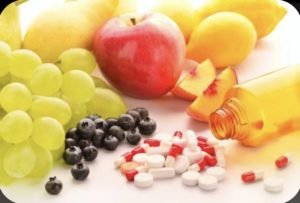

0 Comments